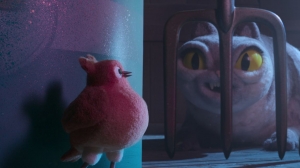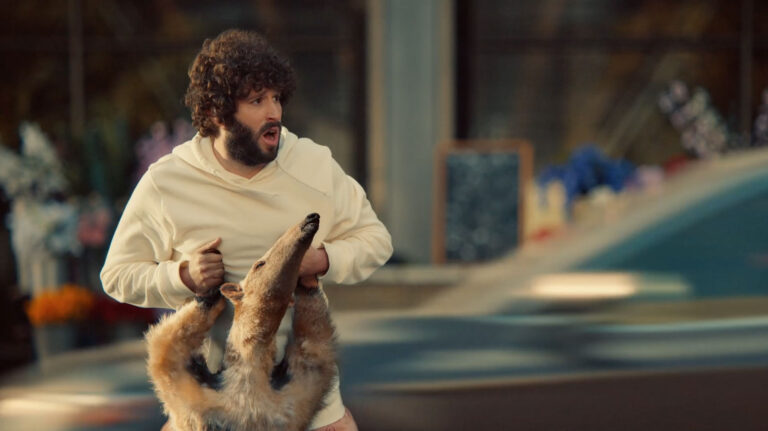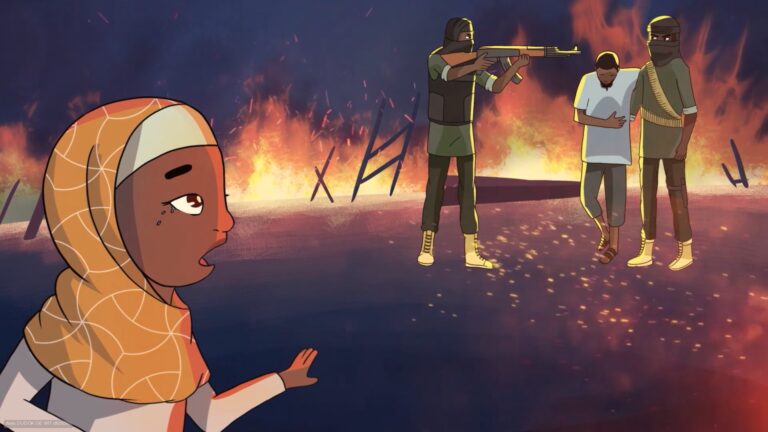“We focused a lot on the outline and silhouette of the characters,” explains Ojari. “We wanted them to be really distinct and very different from each other. There’s a big theme of difference in the film and how differences working together make a richer result. Matt was brilliant creating these really distinct, hopefully, very recognizable characters that felt very different from each other.”
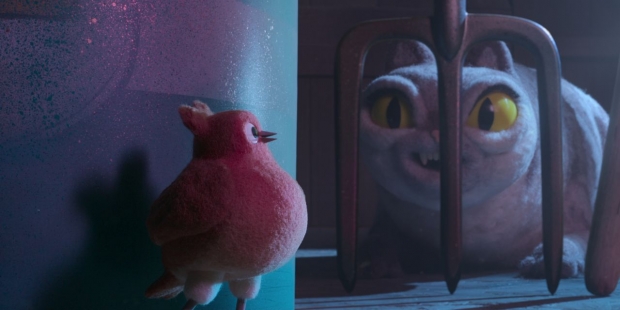
But event with all the detail involved with creating felt puppets and elaborate, captivating environments, the biggest challenge according to Please and Ojari was incorporating music into all the quick-witted moments, and facial expressions Aardman – and stop-motion as a whole – is known for. All the film’s musical numbers were scored by Please’s brother Ben and sister-in-law Beth Porter, also known as The Bookshop Band.
Just in time for the holidays, Aardman Animations has released Robin Robin, their first ever stop-motion musical starring a clumsy, lyrical little bird who desperately wants to be a sneak-tastic mouse.
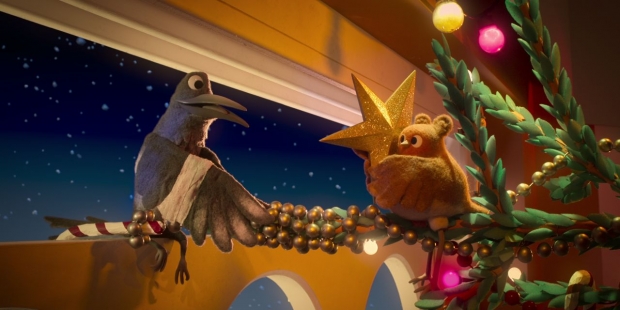
“Choreographing the musical side of the film took a lot of planning and it meant that, obviously, we had to have the songs and the lyrics of the songs completely figured out before we filmed it,” says Ojari. “We just tried to work the idea of the rhythm of the music and the different melodies being played into the action. You’ll see, throughout the film, in the music scenes, that even all the seemingly accidental things, like Robin knocking over a teacup and things like that, they’re all to the rhythm of the music.”
From creating the animatic, to creating puppets and sets, filming, and then releasing the finished product, creating stop-motion animation is a famously painstaking, laborious, and time-consuming process. Adding choreographed musical numbers to the mix does makes that workload even more difficult. Still, both Ojari and Please say that the best part of stop-motion, while tedious, is the opportunity for spontaneity, and music has also made the playful parts of production all the more fun.
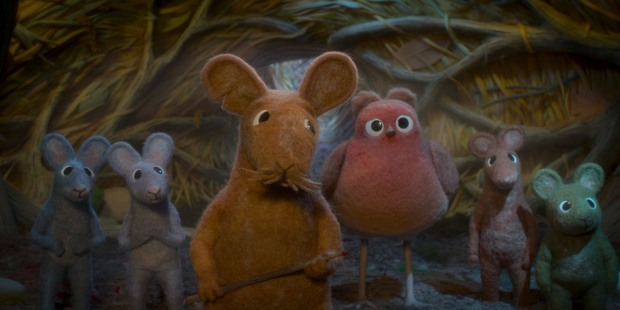
“Particularly when they’re in the human world,” adds Please. “Like in the kitchen, for example. All our main puppets are built at 170 percent normal scales, so they’re just under twice normal size. And so, when we built the kitchen world, it was all built at that scale of 170 percent. We would go in and feel like tiny people that have huge kitchen worktops and all these massive spoons and cups and teapots. We got to feel what it’s like to be on Robin’s scale and feel how daunting and amazing the world would feel like.”
For Daniel Ojari and Michael Please, the special’s creators, the music was not only a fun part of the filmmaking process, but it was also, according to Ojari, “a very expressive part of the storytelling.”
To prove herself a proper mouse and atone for her mistakes, Robin sets out alone to steal from one of the last available houses. While meeting other bird friends along the way that agree to help her, Robin also manages to make an enemy of the local cat, voiced by the well-known Gillian Anderson.
In their world of make-believe and fabric toys, the filmmakers say Robin Robin has also enhanced their enthusiasm to create more stop-motion musicals. Please affirms that “for sure, we’d love to make more.” Ojari adds, “Perhaps, it’s because we’ve got young families ourselves. When you have little kids, you sing to them and the stuff that they watch often involves a lot of song. So, as a parent with young kids, music is so much more part of your life and identity. And I think that’s definitely found its way into our work. And that’s another reason to keep on doing this.”
This was also the first time Aardman used felt in producing their characters.
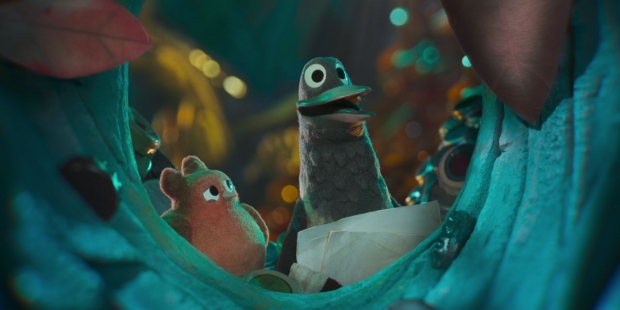
While Please likens the stop-motion filming process to “highly-controlled play,” he says that the biggest difference, and reward, as compared to 2D or 3D, is that the result is a scrapbook of ideas all pulled together from members of the whole production team. “Stop-motion also has a finality to it, and you can’t endlessly fiddle with it, which is very refreshing,” says Please.
Now streaming on Netflix, the animated Christmas story from the Academy Award-winning studio known for Shaun the Sheep and Chicken Run stars Christopher Robin’s Bronte Carmichael as a young bird named Robin, raised by a family of mice who make a living stealing goodies from the homes of humans. Despite Robin’s best efforts, she just can’t seem to stop singing, or fluttering her wings, uncontrollably bumping into things that bring unwanted attention to herself and her hungry mice family. Eventually, Robin’s repeated failures to quietly sneak result in almost no houses left for the mice to steal from.
These daunting but amazing worlds were built based on the artwork of Canadian illustrator Matthew Forsythe, the film’s production designer. “We’ve been huge fans of his work for many years, so we were thrilled to get him to join us on the project,” notes Please. “Matt has an amazingly rich and textural world that he builds up in his paintings, so we were really working to translate the look of that into a 3D world.”
“The humor, the timing and the nuances of those performances, they come from lots of different places,” says Please. “One of the things we do between the animatic and shooting is to film a live-action reference. So, there’s a version of the film that’s just entirely Dan and I performing all the roles of the characters, filming ourselves and compositing ourselves into a background. We then feed that back to edit and talk it through with the animators on set. And the animators will often add their own input into it as well.”
“You can get ideas when you’re down there [on set] and try to work those into the performance,” adds Ojari. “I think it’s the nature of stop-motion. It is a slow process, but it allows for lots of ideas. And that’s a big part of the process that we love, being able to enrich every scene and shot with as much as you can possibly think of. Being on set and in that environment where you can see something like a spoon and wonder, ‘Oh, what if she steps on that here and causes it to fling there?’ It’s basically like playing with toys all day.”
“The exciting thing about stop-motion is you get to make these tiny worlds,” Ojari notes, “and you can play with scale and feel like the camera is right down in these tiny little worlds. And that’s how we wanted the world to feel from Robin’s perspective. We felt, if you’re a creature that’s only a few inches tall, you’re going to see the world from a really different perspective. A few bushes to Robin might be like a forest. So, exploring and designing the world from that perspective was a really fun and exciting endeavor.”
Victoria Davis is a full-time, freelance journalist and part-time Otaku with an affinity for all things anime. She’s reported on numerous stories from activist news to entertainment. Find more about her work at victoriadavisdepiction.com.
He continues, “Translating illustrations into 3D worlds is very much how we’ve worked over the years in terms of how we approach stop-motion filmmaking. We always start from a very graphic illustrative template, and then build that up into this 3D, dynamic world, often building sets to cameras so that they feel like they’re composed like illustrations. Working with Matt’s production design was fantastic in that we could take these bold silhouettes and shapes and then find ways to richly texture them in a stop-motion world.”
The film is a textile winter wonderland of tiny animal homes, furnished in shiny trinkets taken from the trash, as well as larger-than-life views of house kitchens and worn-down sheds, designed to project the mystery of the grander, human world, which of course, would be held in awe by a little robin bird.
Ojari adds, “With stop-motion, generally, you get one chance to shoot it, so it’s like a live performance. And we like that element because you can plan as much as you like, and refine all the little details, but it’s ultimately about what happens on the shooting day. You get this spontaneity and these little mistakes that you didn’t plan for, that come out in the finished product and make it even richer. And it was really fun work to have the blueprint of so many of these scenes built around music and rhythm.”
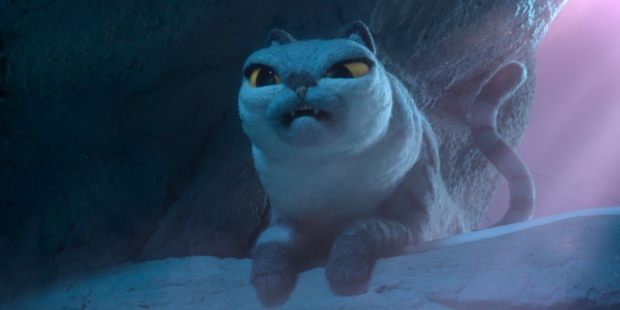

“We loved the medium of a musical to express Robin’s journey throughout the film because she’s a loud bird that lives with a family of quiet mice,” explains Ojari, who co-directed with Please. “We used the idea that she liked to sing and that she had her own song to sing, but it doesn’t quite fit with the sneaks of these mice. She’s trying to be like them and sing her song while sneaking, but it doesn’t work. And after her journey, the resolve is she figures out where her song goes, where it fits in and her place with it and has a newfound confidence in her melody. Weaving those analogies and lyrics through the film was a really great, extra dimension of storytelling that we hadn’t used before.”
